Water. Earth. Fire. Air. Long ago, the four nations lived together in harmony. Then, everything changed when the Fire Nation attacked. Only the Avatar, master of all four elements, could stop them, but when the world needed him most, he vanished… Fortunately, Avatar Aang was found and there is a chance for this young Avatar to stop the fire nation and the evil Fire Lord Ozai during the Day of the Black Sun: a day when the Firebenders are powerless. With his allies Katara, Sokka, Toph and even Zuko, Aang is trying to prepare for this day. Will Team Avatar succeed in ending the war with the Fire Nation or will the Fire Nation rise again from the ashes in Avatar: The Last Airbender Fire Nation Rising? I invite you to come to Lake Laogai to play this game!
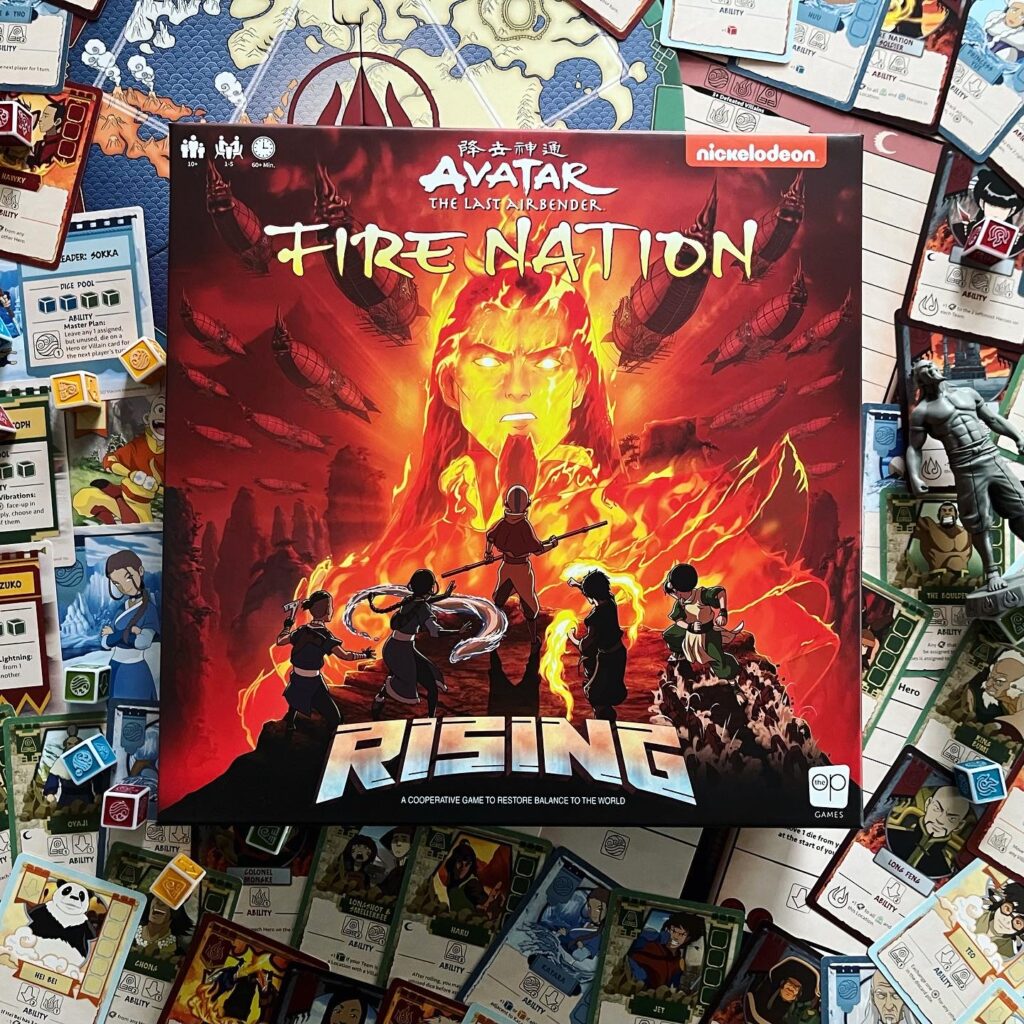
Goal and setup
In Avatar: The Last Airbender Fire Nation Rising (that’s quite a mouthful so I’ll limit myself to: Fire Nation Rising) the heroes take turns playing (in different phases) and the game ends once the Fire Nation or one of the Avatar’s teams have won. Players lose collectively if 10 heroes are eliminated at the end of a turn or all heroes on a single team are eliminated. Players win collectively if they manage to overcome Fire Nation during three Final Battles during Black Sun.
Fire Nation Rising differs from other Rising games due to the Ruin track and balance board. Each turn, Fire Nation cards determine how many steps players advance on the Ruin track. During a turn, players can advance themselves on the balance track. Once the end of the Ruin track is reached, the final phase of the game begins and three final battles appear in the three different locations of the game board. The Day of the Black Sun is the event that the Avatar and his friends and allies live toward. The Fire Nation also lives toward this day, as the sun is then largely covered and all Firebenders are less powerful. If players have also reached the end of the balance track before the black sun appears, they experience benefits in the final stage of the game. If players are not lucky, the Fire Nation may still be too strong.
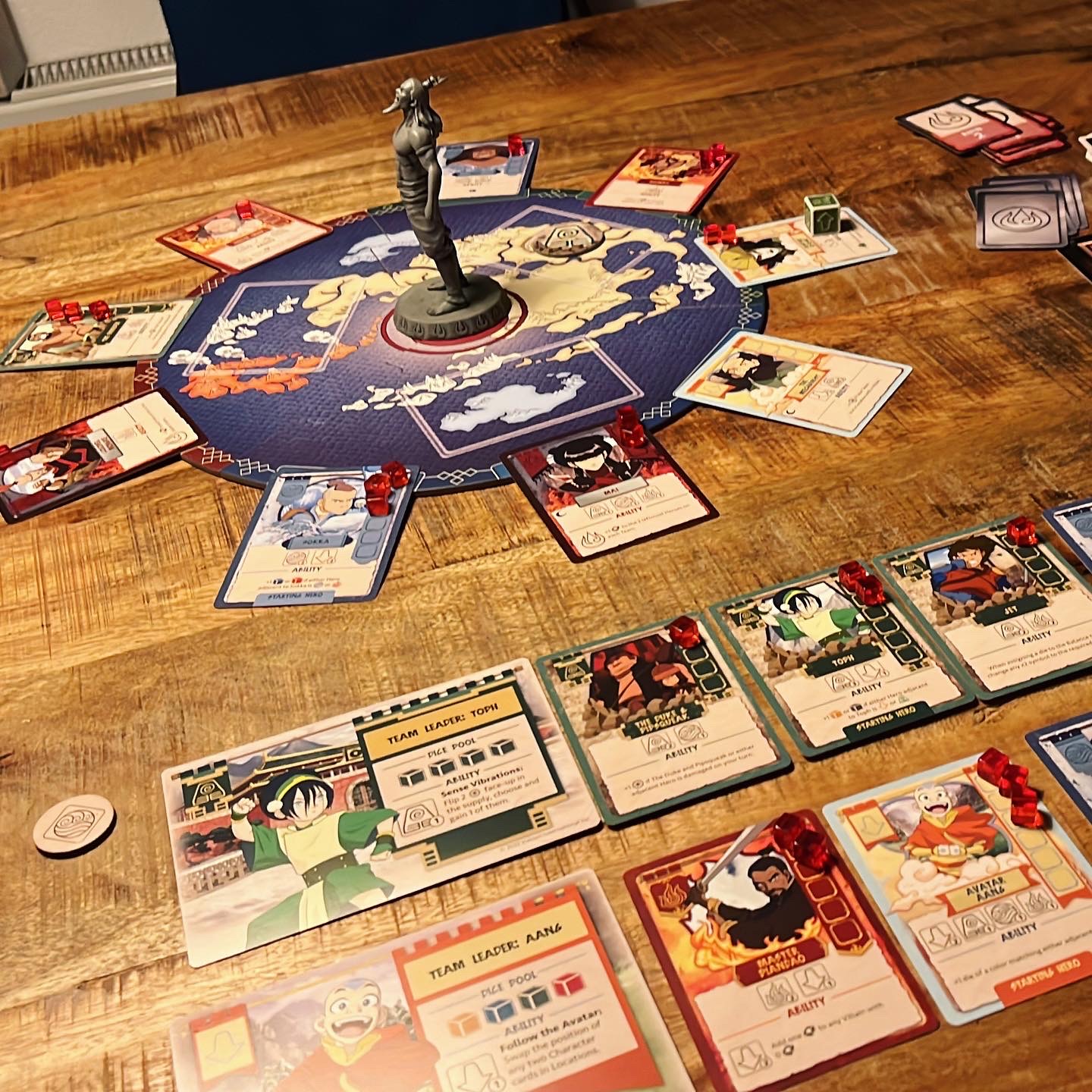
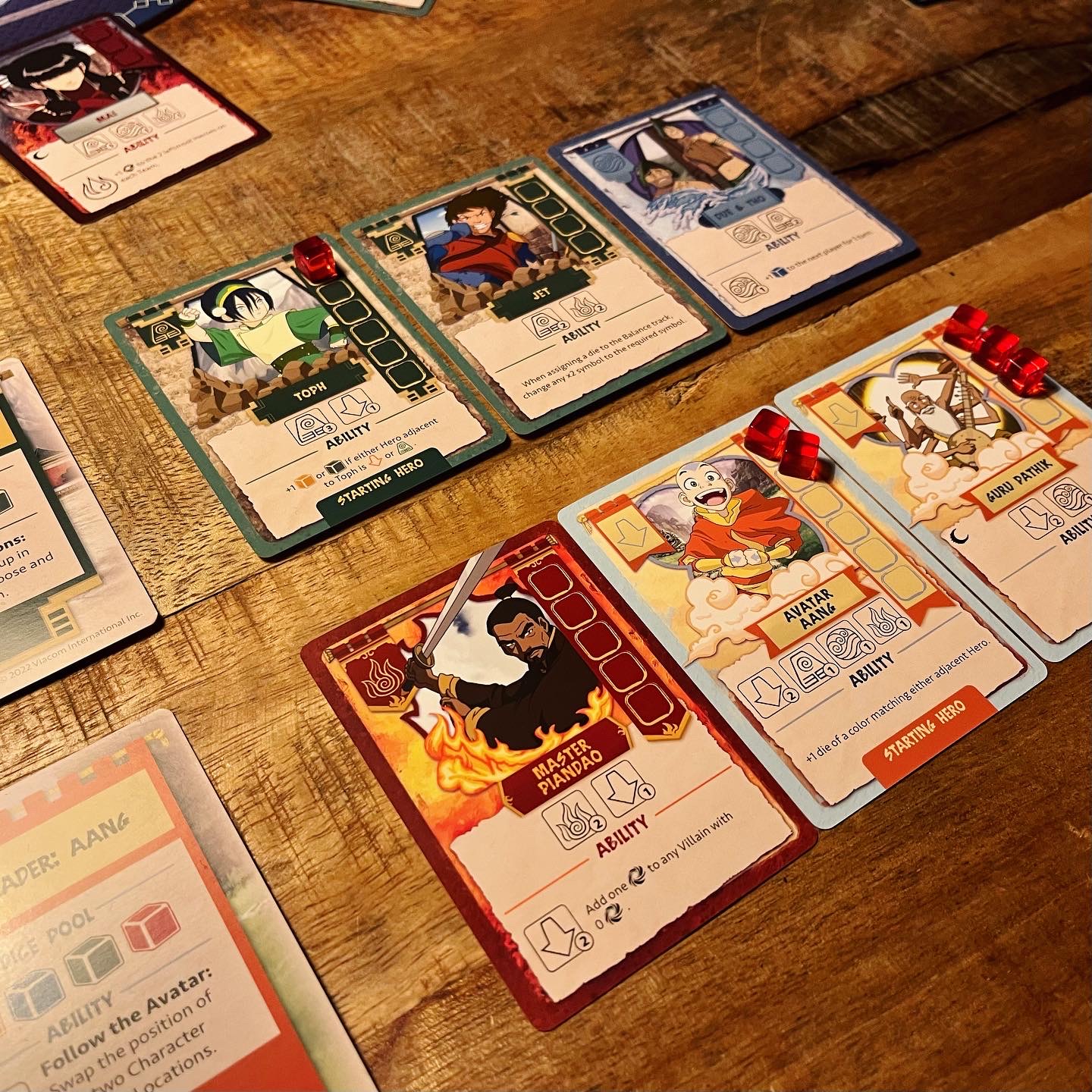

Each player gets a team and its starting hero(s). Players lay out the location board and place the statue of Fire Lord Ozai in the middle of the locations. Next to the location board, they place the balance track and the Ruin track. They shuffle the Fire Nation cards and place them near Ozai. Finally, players lay out a pile of Pai Sho tiles (bonuses players can earn during the game) and a pile of hero and villain cards. The amount of bad guys depends on the difficulty level chosen. Players are now ready to gang up!
Gameplay
Taking turns, each player (a team) goes through a number of stages. Each turn, a player chooses a location on the game board, the Fire Nation is in play, and the team of heroes performs actions with the various dice. The active hero moves to one of Fire Lord Ozai’s three locations, then this player flips open one of the Fire Nation cards. Depending on the card, the statue of the evil Fire Lord moves in direction indicated on the card. Some cards also indicate that the marker on the Ruin track is several steps. Heroes at Fire Lord Ozai’s location receive damage (both hero cards at the location or recruited heroes on the active player’s team). Any special abilities of bad guys at the same location are also activated.
Next, the active player may roll dice. Which dice the player may roll depends on the starting hero/team and the different recruited heroes. Aang, as the avatar, is nicely balanced and can roll different coloured dice while Toph, for example, only starts with green dice. Each die contains basically the same symbols, but the amount of certain symbols present varies. A red die obviously contains more fire symbols.
At each location there are three cards of two possible types: bad guys and heroes. Each card also shows the required symbols that players must roll. Bad guys do damage by rolling the correct symbols, and heroes can be recruited using the same dice. You may roll as many dice as you want/can, but if you can’t or don’t want to place a symbol but want to roll again, you must put a die aside. Which and how many dice a player may roll depends on the hero chosen and the heroes recruited. This is because each recruited hero places the player in front of him, and these heroes give that player special properties. Some special abilities require a player to roll dice to gain the ability and other abilities are passive in nature.
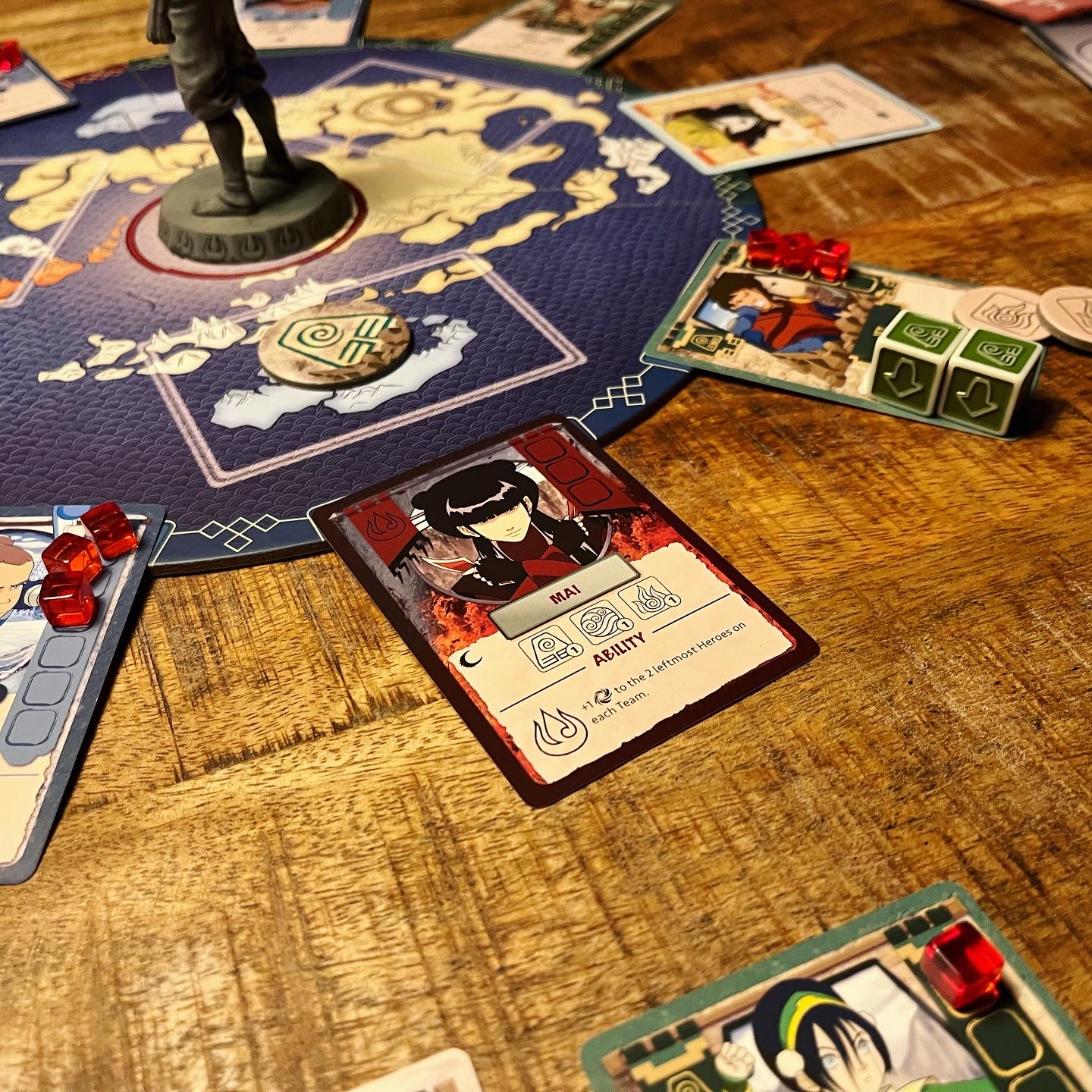
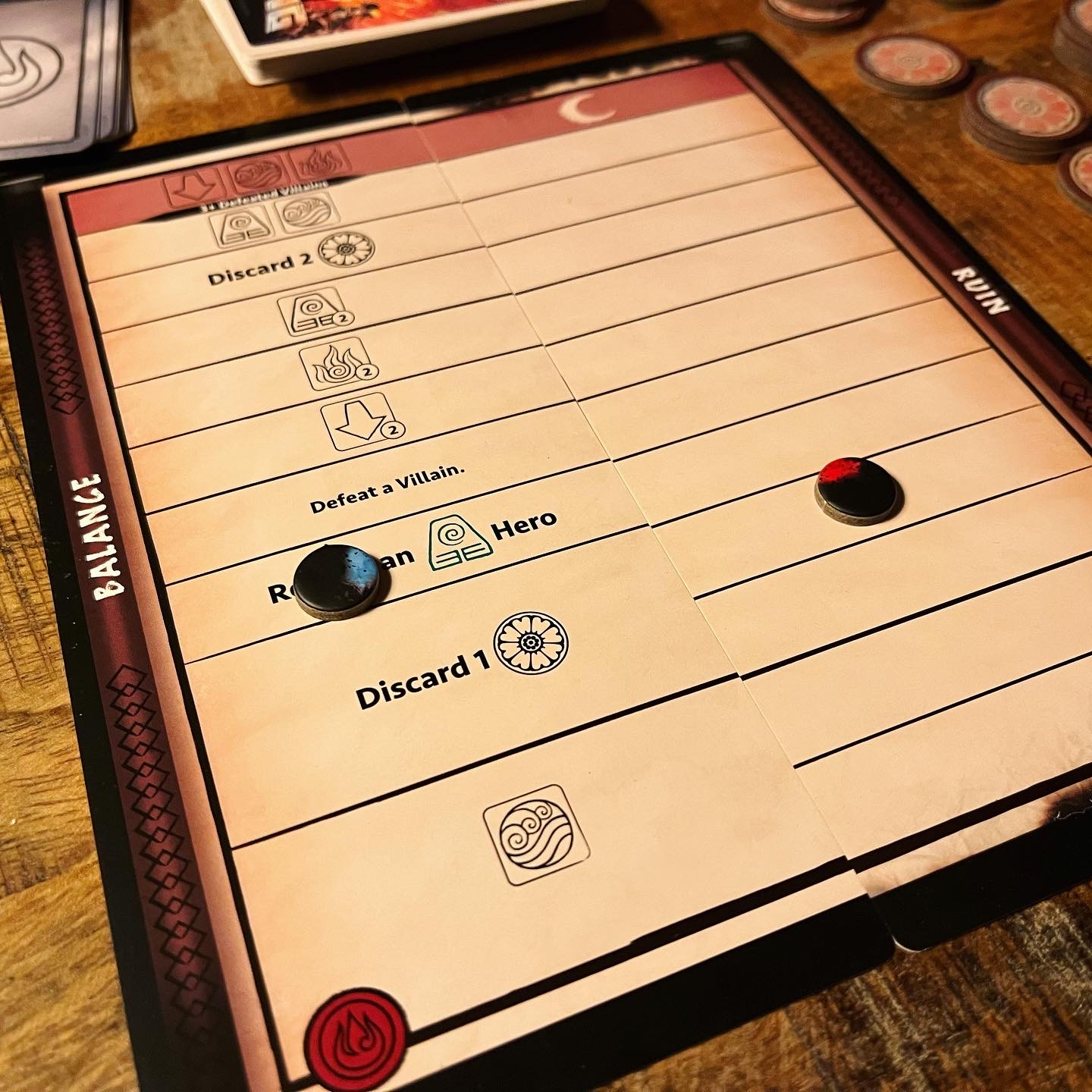
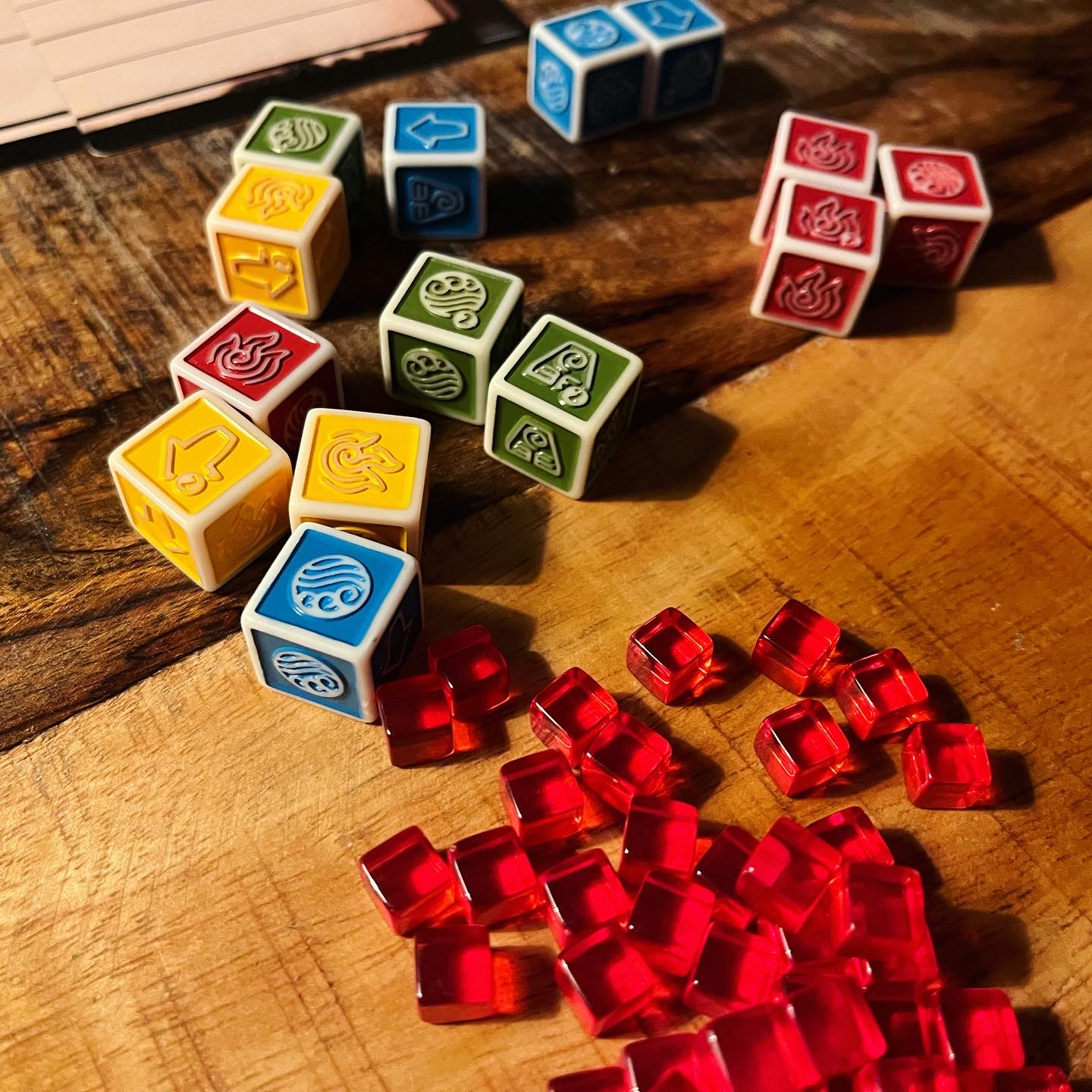
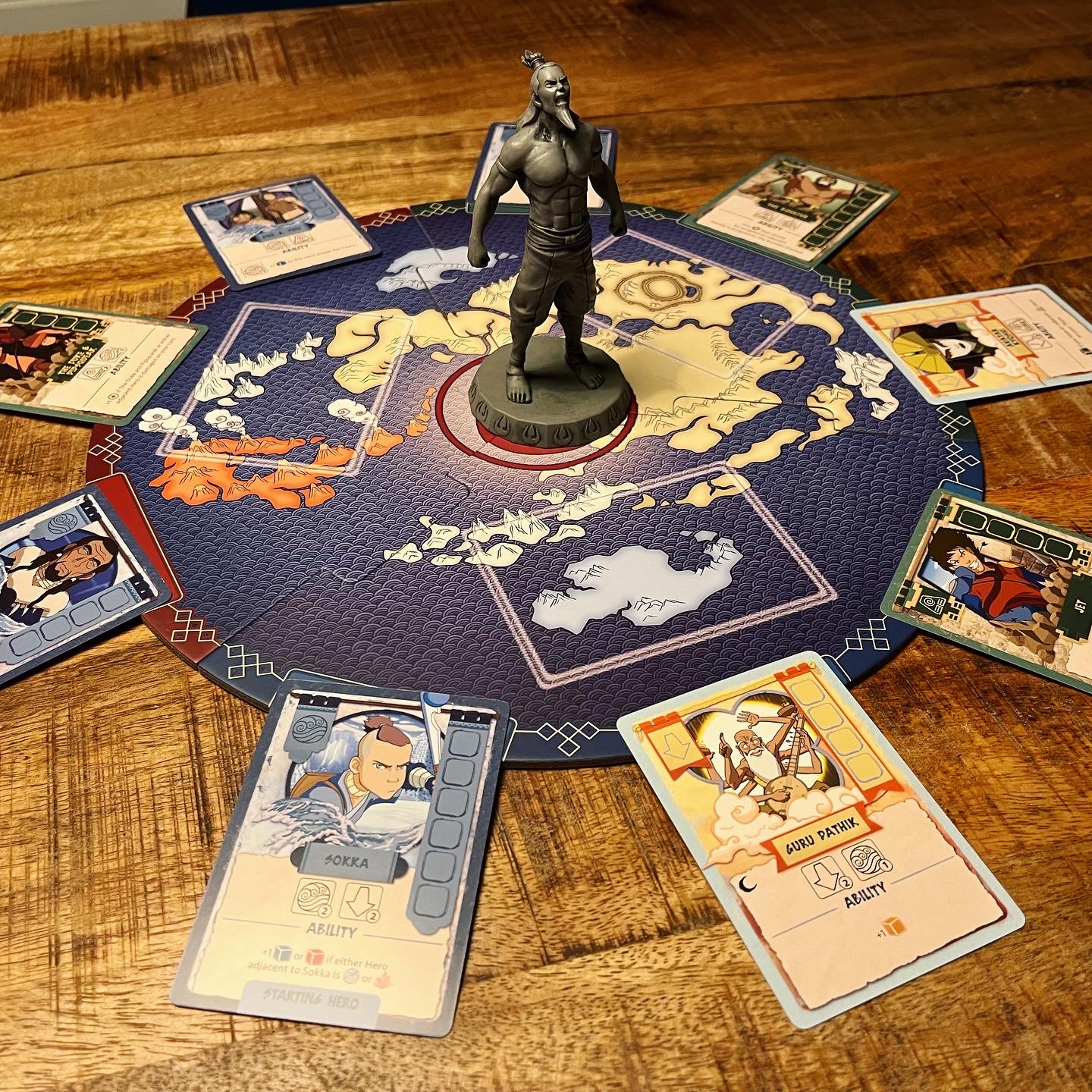
At the end of a turn, defeated heroes or villains (cards that receive damage receive cubes) are discarded. Empty spaces (that is, without cards) in the locations around the statue of Fire Lord Ozai are replaced with new cards from the discard pile. Have ten heroes been defeated? Then the players have failed and the Fire Nation will be unstoppable.
Verdict
Like the other games in the Rising series, Fire Nation Rising is a very challenging cooperative game with plenty of excitement and a healthy dose of luck. The luck of the dice makes it entertaining on the one hand and also provides the required frustration and stress that makes you want to beat the game. In the game you try to prepare for the last few battles in the game by making tactical decisions and taking the right actions. When the end of the game arrives is somewhat in your control, which sometimes presents you with interesting dilemmas. Am I going to defeat one more enemy or recruit hero or try to get ahead of the Fire Nation by invoking the Day of the Black Sun. By the end of the game, players should have built up a good collection of heroes who will literally and figuratively go through fire(s) for the players. You will also face other dilemmas: will I use my dice to recruit heroes to become stronger, defeat a villain, heal heroes anyway or sacrifice heroes for the greater good? In addition, the Rising series is also easy to learn for less experienced players and the different themes are more than inviting. Don’t burn yourself by playing with fire!



